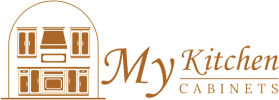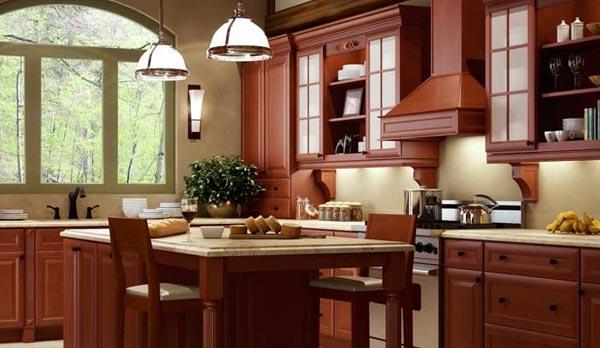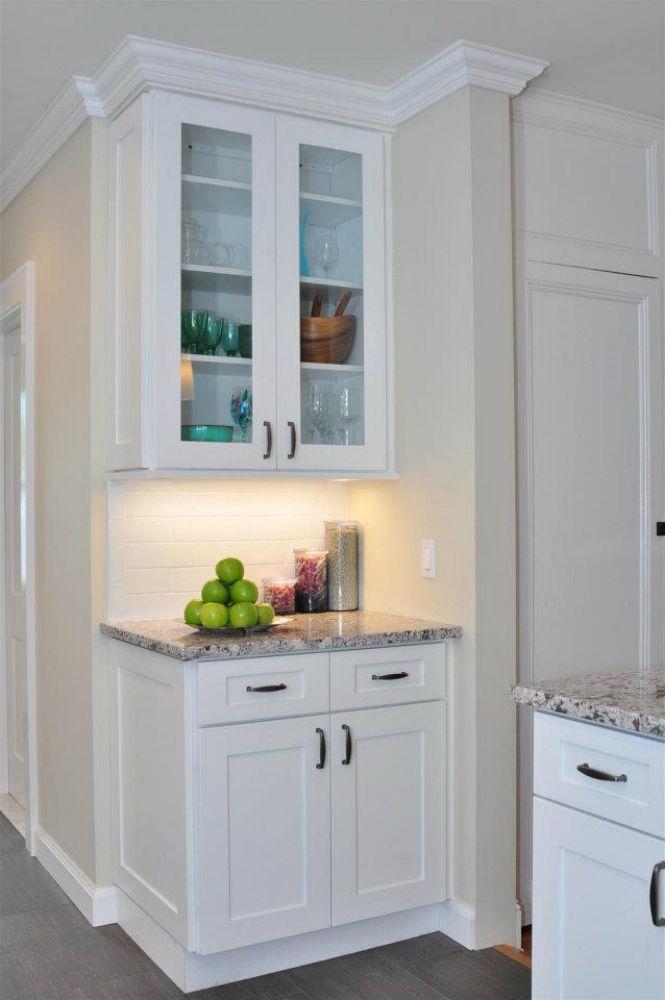Get to Know Different Cabinet Materials for Wood Cabinetry
When it comes to choosing cabinets for your home, one of the most important decisions you’ll make is selecting the right cabinet material. Cabinets not only serve as functional storage solutions but also play a significant role in the overall aesthetics of your space. Wood cabinetry remains a popular choice due to its timeless appeal and durability. In this comprehensive guide, we will delve into the various cabinet materials available for wood cabinetry and answer some of the most frequently asked questions about them.
What Are the Different Types of Wood Used for Cabinets?
Wood choice is crucial when it comes to cabinet construction. Different types of wood offer varying aesthetics, durability, and price points. Here are some commonly used wood species for cabinets:
- Oak: Oak is known for its durability and prominent grain pattern. It’s available in red and white varieties, with red oak being slightly cheaper. Oak cabinets are a classic choice for traditional kitchens.
- Maple: Maple wood is smooth and has a uniform grain pattern. It’s often chosen for its light color, which can be easily stained or painted to match your kitchen’s style.
- Cherry: Cherry wood features a rich, reddish-brown hue that darkens over time. It exudes warmth and elegance, making it a popular choice for high-end kitchens.
- Alder: Alder has a fine grain and is relatively lightweight. It’s often chosen for its affordability and suitability for staining.
- Hickory: Hickory wood is incredibly strong and has a rustic appearance due to its distinctive grain patterns. It’s a great choice for a farmhouse or country kitchen.
- Walnut: Walnut is a dark, luxurious wood that adds a touch of sophistication to any space. It’s often used for custom or premium cabinets.
- Birch: Birch cabinets have a light color and fine grain. They are cost-effective and work well in contemporary kitchen designs.
- Pine: Pine is a softwood with a knotty appearance. It’s an economical choice for rustic or cottage-style kitchens.
- Mahogany: Mahogany is a premium wood known for its deep, reddish-brown color and elegant appearance. It’s often used in high-end cabinetry.
- Bamboo: Bamboo is a sustainable and eco-friendly option. It has a unique, linear grain pattern and works well in modern and environmentally conscious kitchens.
How Do I Choose the Right Wood for My Cabinets?
Selecting the right wood for your cabinets involves considering several factors:
- Style: Determine the style of your kitchen or space. Traditional kitchens often pair well with oak or cherry, while modern kitchens may benefit from maple or bamboo.
- Budget: Your budget will play a significant role in your wood choice. Exotic woods like mahogany tend to be more expensive than oak or maple.
- Durability: Consider the wear and tear your cabinets will endure. If you have a busy household, a more durable wood like hickory or oak may be suitable.
- Color and Finish: Think about the color and finish you desire. Some woods, like cherry and walnut, naturally have darker tones, while others are lighter and can be stained to your preference.
- Grain Pattern: The grain pattern of the wood can affect the overall look of your cabinets. Decide if you prefer a more uniform appearance or a pronounced grain.
- Maintenance: Some woods require more maintenance than others. For example, pine is softer and more prone to dents, while maple is durable and easy to clean.
- Environmental Concerns: If sustainability is important to you, consider eco-friendly options like bamboo or reclaimed wood.
- Personal Preference: Ultimately, your personal taste and the ambiance you want to create in your space should guide your decision.
To make an informed choice, it’s advisable to visit showrooms or consult with cabinet professionals who can provide samples and expert guidance.
Are There Eco-Friendly Options for Wood Cabinets?
Yes, there are eco-friendly options for wood cabinets that cater to environmentally conscious consumers. Here are a few sustainable choices:
- Bamboo: Bamboo is a rapidly renewable resource that grows much faster than traditional hardwoods. It’s a durable and eco-friendly option for cabinets.
- Reclaimed Wood: Using reclaimed wood from old barns, factories, or other structures is an environmentally responsible choice. It reduces the demand for new trees and adds character to your cabinets.
- FSC-Certified Wood: The Forest Stewardship Council (FSC) certifies wood products that meet strict sustainability standards. Look for FSC-certified wood when shopping for cabinets.
- Low-VOC Finishes: Opt for cabinets with low-VOC (volatile organic compound) finishes to reduce indoor air pollution.
- Recycled Materials: Some cabinet manufacturers incorporate recycled materials into their products, further reducing their environmental impact.
By choosing eco-friendly cabinet materials, you can minimize your carbon footprint and contribute to a more sustainable future.
What Are the Pros and Cons of Different Wood Types for Cabinets?
Each wood type used for cabinets comes with its own set of advantages and disadvantages. Here’s a breakdown:
Oak Cabinets:
- Pros: Durable, affordable, and timeless.
- Cons: Can be heavy and may show grain through lighter finishes.
Maple Cabinets:
- Pros: Smooth, uniform grain, and versatile for staining or painting.
- Cons: Relatively expensive compared to some other options.
Cherry Cabinets:
- Pros: Elegant appearance and deep color.
- Cons: Expensive, and the color can darken over time.
Alder Cabinets:
- Pros: Affordable and takes stains well.
- Cons: Softer than some other woods, making it more prone to dents.
Hickory Cabinets:
- Pros: Extremely durable and unique grain pattern.
- Cons: Can be challenging to work with due to its hardness.
Walnut Cabinets:
- Pros: Luxurious appearance and durable.
- Cons: Expensive and may be too dark for some tastes.
Birch Cabinets:
- Pros: Affordable and takes stains evenly.
- Cons: Softer than maple, making it more susceptible to dents and scratches.
Pine Cabinets:
- Pros: Economical and great for rustic aesthetics.
- Cons: Softer wood prone to dents and scratches.
Mahogany Cabinets:
- Pros: Exotic and luxurious appearance.
- Cons: One of the most expensive wood options.
Bamboo Cabinets:
- Pros: Sustainable and eco-friendly option.
- Cons: Limited color options and may be less traditional in appearance.
Understanding these pros and cons can help you make an informed decision based on your specific needs and preferences.
What Is the Best Wood for Kitchen Cabinets?
The choice of the best wood for Forevermark kitchen cabinets depends on your style, budget, and durability requirements. While there is no one-size-fits-all answer, maple and oak are often considered versatile and reliable choices for kitchen cabinets. They offer durability, a range of finish options, and can complement various kitchen styles.
Additionally, if you’re looking for a sustainable option, bamboo is an excellent choice. Its rapid growth and eco-friendly properties make it an attractive option for environmentally conscious homeowners.
How Do I Maintain and Care for Wood Cabinets?
Proper maintenance is essential to keep your wood cabinets looking their best. Here are some tips for maintaining and caring for wood cabinets:
- Regular Cleaning: Wipe down cabinets with a soft, damp cloth to remove dust and debris. Use a mild, non-abrasive cleaner for tougher stains.
- Avoid Excess Moisture: Wood is sensitive to moisture. Clean up spills promptly and ensure the area around sinks and dishwashers is well-sealed.
- Avoid Harsh Chemicals: Steer clear of harsh cleaning chemicals that can damage the finish. Stick to gentle, wood-friendly cleaners.
- Use Cabinet Liners: Consider using cabinet liners to protect shelves and drawers from scratches and stains.
- Inspect and Tighten Hardware: Periodically check and tighten cabinet hardware to prevent loose handles or knobs.
- Reapply Finish as Needed: Over time, the finish on wood cabinets may wear down. Reapply a new finish or touch up areas as necessary.
- Control Humidity: Maintain stable humidity levels in your home to prevent wood from warping or cracking.
- Avoid Direct Sunlight: Direct sunlight can fade wood finishes. Use window treatments to protect your cabinets from prolonged exposure.
By following these maintenance tips, you can extend the life and beauty of your wood cabinets.
Can I Mix Different Wood Types in My Kitchen?
Mixing different wood types in your kitchen can create a unique and visually appealing design, but it requires careful planning. Here are some tips for successfully mixing wood types:
- Choose a Dominant Wood: Select one wood type as the dominant material for your cabinets. This wood should cover the majority of your cabinetry.
- Accent with Contrasting Woods: Use contrasting wood types sparingly for accents, such as open shelving, an island, or trim.
- Consider Color Harmony: Ensure that the different wood types you choose harmonize in terms of color and style. They should complement, not clash with, each other.
- Maintain a Cohesive Design: Keep the overall design cohesive by tying in the wood accents with other elements in the kitchen, such as countertops, backsplashes, or flooring.
- Seek Professional Advice: If you’re unsure about your choices, consult with a kitchen designer or interior decorator to help you achieve the desired look.
Mixing wood types can add depth and character to your kitchen design, but it’s essential to strike the right balance for a harmonious result.
Are Custom Wood Cabinets Worth the Investment?
Custom wood cabinets offer several benefits, making them worth the investment for many homeowners:
- Tailored to Your Needs: Custom cabinets are designed to fit your kitchen’s specific layout, maximizing storage space and functionality.
- Premium Materials: You can choose from a wide range of high-quality wood species, finishes, and hardware to create cabinets that match your aesthetic preferences.
- Unique Design: Custom cabinets allow for unique and personalized designs that cater to your style and vision.
- Enhanced Durability: Quality craftsmanship and materials often result in cabinets that are more durable and longer-lasting.
- Increased Home Value: Custom cabinets can add significant value to your home, making them a smart investment if you plan to sell in the future.
While custom cabinets come at a higher price point than stock or semi-custom options, their tailored design and quality construction can make them a worthwhile choice for those seeking a truly customized kitchen.
What Are the Latest Trends in Wood Cabinetry?
Kitchen design trends evolve over time, and wood cabinetry is no exception. Here are some of the latest trends in wood cabinetry:
- Two-Tone Cabinets: Mixing two different wood finishes or combining wood with painted cabinets adds depth and visual interest to the kitchen.
- Open Shelving: Open shelving made from wood adds a touch of warmth and allows for easy access to frequently used items.
- Textured Wood: Textured wood grains, such as wire-brushed or reclaimed wood, create a rustic and inviting look.
- Floating Cabinets: Floating cabinets without visible hardware create a sleek and modern appearance.
- Contrasting Islands: Having a kitchen island with a different wood type or color from the rest of the cabinets is a popular choice for creating a focal point.
- Minimalist Designs: Clean lines and minimalist cabinet designs are gaining popularity for a contemporary look.
- Natural Finishes: Embracing the natural beauty of wood with clear or light finishes is a timeless trend.
Keep in mind that while trends can provide inspiration, it’s essential to choose a style that suits your personal preferences and complements your home’s overall aesthetic.
In conclusion, selecting the right wood material for your cabinets is a crucial decision in the overall design and functionality of your kitchen or living space. Understanding the various wood types, their pros and cons, and how to care for them will empower you to make an informed choice. Whether you opt for the classic appeal of oak, the elegance of cherry, or the sustainability of bamboo, your cabinet choice should align with your style, budget, and environmental values. Mixing wood types and considering custom options can further enhance the uniqueness and functionality of your cabinets. Stay informed about the latest trends, but remember that your personal taste should guide your decision-making process. By carefully selecting and maintaining your wood cabinets, you can create a beautiful and functional space that adds value and warmth to your home.


